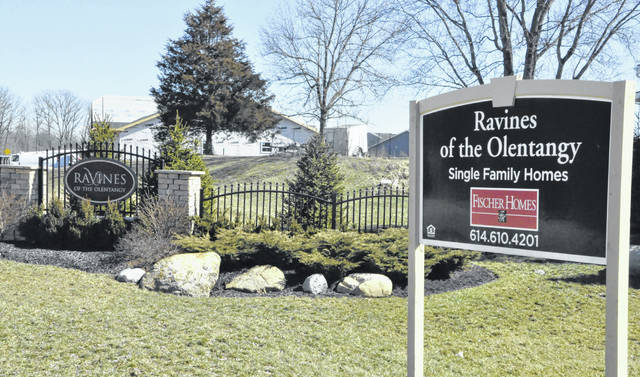
Looking to take a deep dive into the community’s real estate market, the City of Delaware partnered with DiSalvo Development Advisors (DDA) to conduct a real estate assessment. The findings of the assessment were presented by DDA President Pete DiSalvo to Delaware City Council in a work session held Monday.
“We’re really good at telling stories about how great we are, but we needed the information and the data to back that up,” Economic Development Director Sean Hughes said during the work session. “And that’s really what this tool is. After talking with multiple developers and doing our research, the name Pete DiSalvo came up frequently as being one of the most trusted consultants in the nation, actually.”
Hughes said the assessment is a tool that can be used to continue conversations on development in the city, attract new developers into the community, and partner with developers to make proper fiscal decisions.
DiSalvo stated that in his numerous conversations with developers, the biggest factors taken into consideration by them when considering a market are occupancy rates, lease and sale rates, and the related characteristics of each development.
“That is, by far, the most important thing that will help communicate to developers that, hey, this is a market that you want to come into,” he said. “I’ve already had the fortune to speak with several developers recently, and there are a number of items you have (in Delaware) that should start to attract more developers.”
An overall summary of the assessment concluded that Delaware’s current employment profile no longer matches that of its residents.
“The dominant blue-collar resident population of decades ago has shifted to two-thirds of the population now in white-collar occupations, matching the employment profile of Franklin County residents,” the assessment states. “The shift coincided with the commercial development of the Polaris area in southern Delaware County. As a result, the labor pool for the city’s existing employment sectors is shallow, and growth has been reliant upon attracting out-of-town workers. A thoughtful development strategy with unique land use can set the foundation to attract more business types who are more representative of Delaware’s current residents.”
In the rental market, DDA surveyed 24 apartment properties — 18 market-rate properties and six subsidized housing developments — totaling 3,171 units across the city. The results showed a 97% occupancy rate, which DiSalvo said would suggest a strong market.
In addition to the occupancy rate, DiSalvo said the city is “achieving high rent (costs),” which should lead future developers to want to consider Delaware in the future. According to the survey, upper-quartile rents for one-bedroom apartments in Delaware range from $935 to $1,175, and two-bedroom units range from $1,195 to $1,715.
DiSalvo said the high market rates already existing in the market will show new developers they will be able to attract the same rates, which will also support the costs of development. Moving forward, DDA projects 1,289 new renters and the ability for Delaware to support as many as three new apartment developments of up to 260 units over the next five years.
As for the for-sale housing market, DiSalvo called it “interesting” to see the number of new home sales that make up Delaware’s total home sales. According to the assessment, a third of all home sales in the community are new, which DiSalvo said is twice the national average. The average price of new homes in Delaware is $316,219, with resale homes fetching an average of $242,562. On average, 5.6 homes are sold in Delaware per month, which is well above the typical threshold developers are looking for when considering markets, according to DiSalvo.
Perhaps Delaware’s biggest opportunity for housing growth lies in condominiums, where there has been limited development in recent years. DiSalvo pointed out that with 25% of homeowners in Delaware being 65 year or older, the demographics bode well for future condominium growth opportunities.
Over 1.3 million square feet of shopping center, standalone restaurant, and restaurant space were surveyed as part of the assessment as well, showing an 88% occupancy rate that DiSalvo said was in line with what he’s seen in the Columbus market. With the lease rates per square foot for both small and large retail spaces, DiSalvo projected demand for an additional 210,000 square feet of retail and restaurant space by 2025. By then, he projected Delaware residents to have a spending power of over $700 million.
When it comes to office space, the assessment showed few office space alternatives available in the market, an area the city will need to address. The 450,000 square feet surveyed by DDA was “really scratching and picking up everything” available in the community, DiSalvo said, adding that 40% of the space is in the medical field.
While he said the 80% occupancy rate for office space in Delaware “isn’t far off from some Columbus areas,” DiSalvo said the rate is “a little reflective of the limited choices in the market.” He went on to say trends in the job market show “enourmous” growth in occupations utilizing office space, further highlighting the need for Delaware to become a viable market for such companies.
To view the full presentation and disucssions between DDA and city council, access the stream on the city of Delaware’s Facebook page at www.facebook.com/watch/CityofDelaware.


